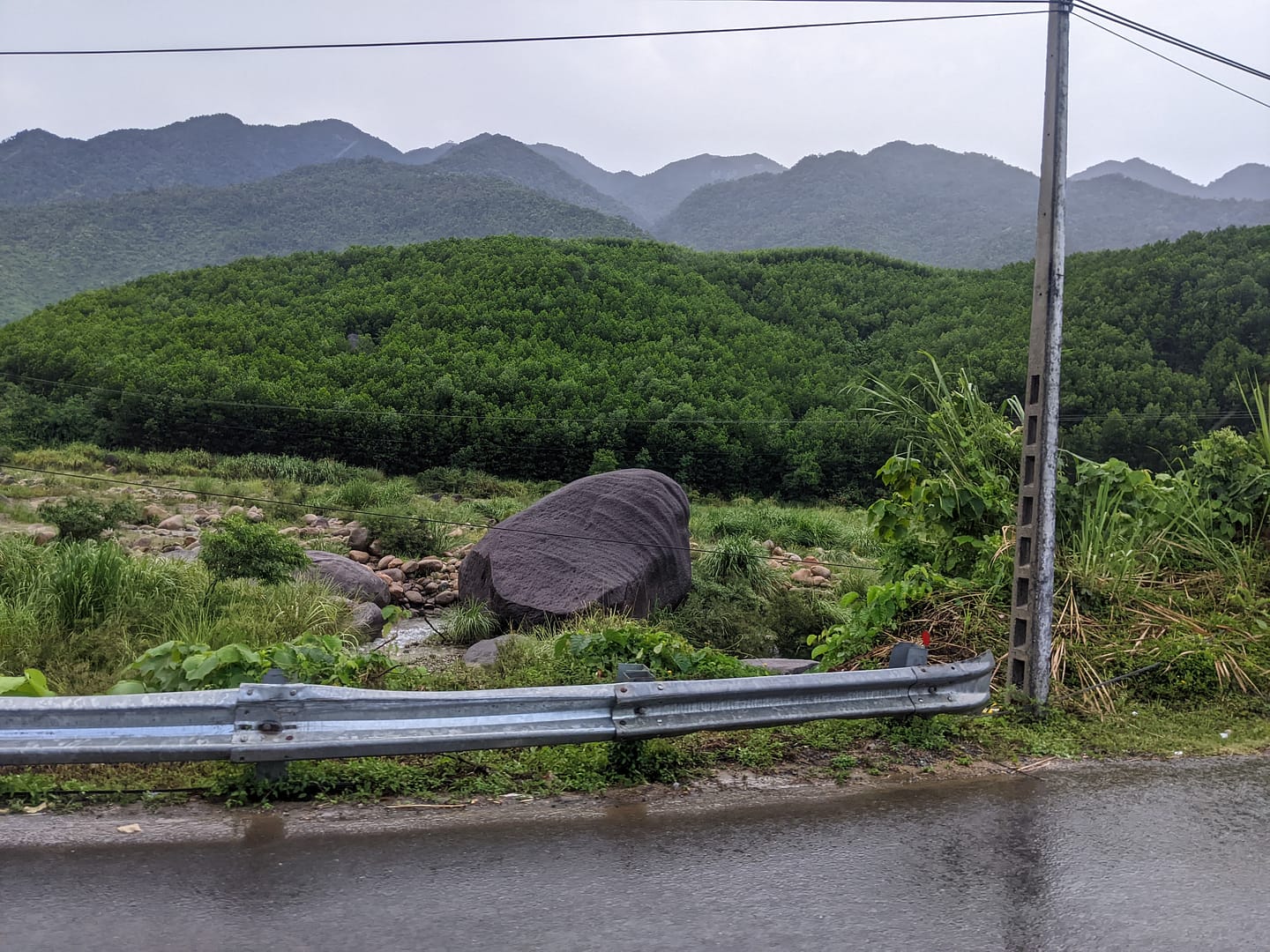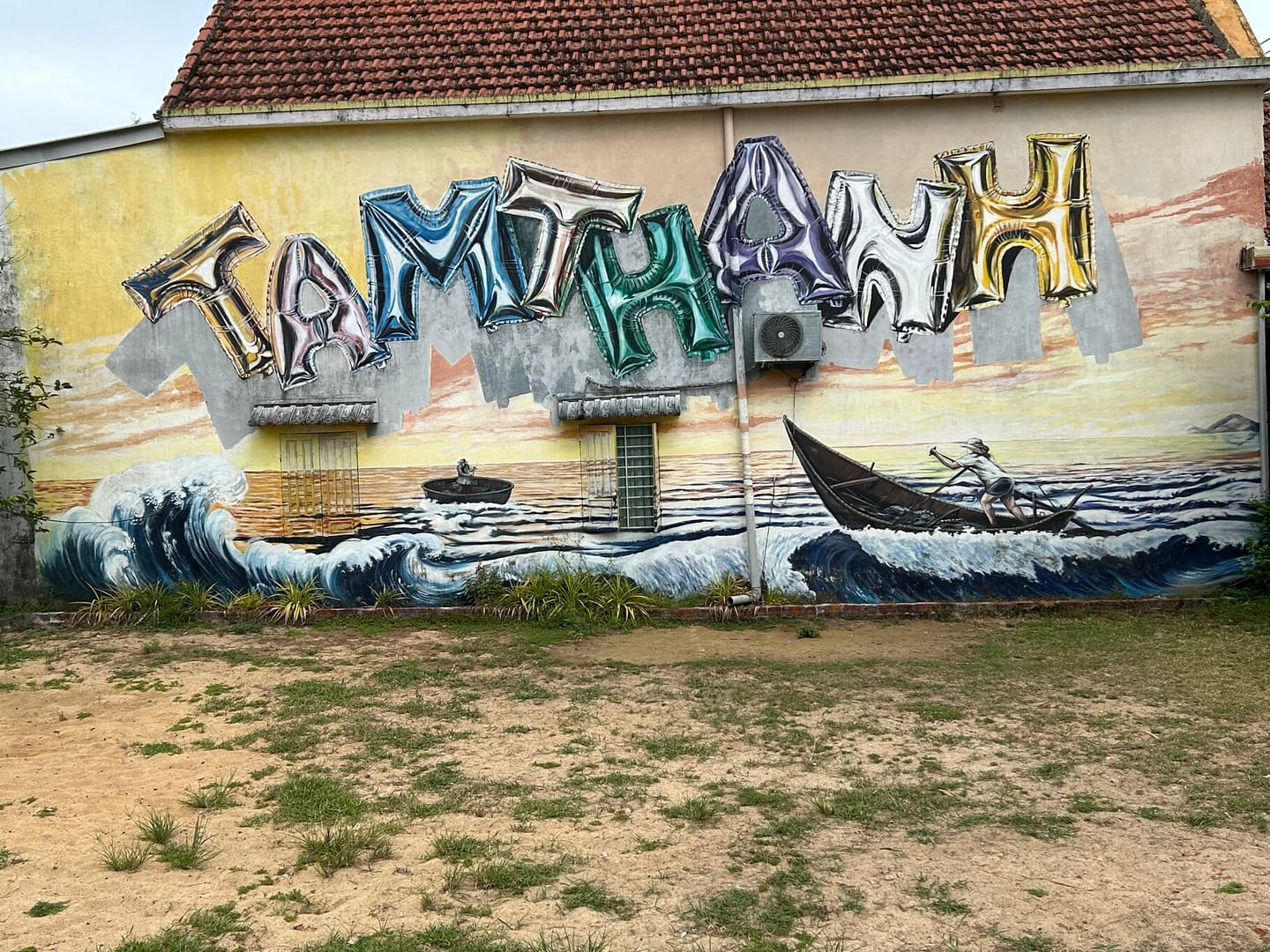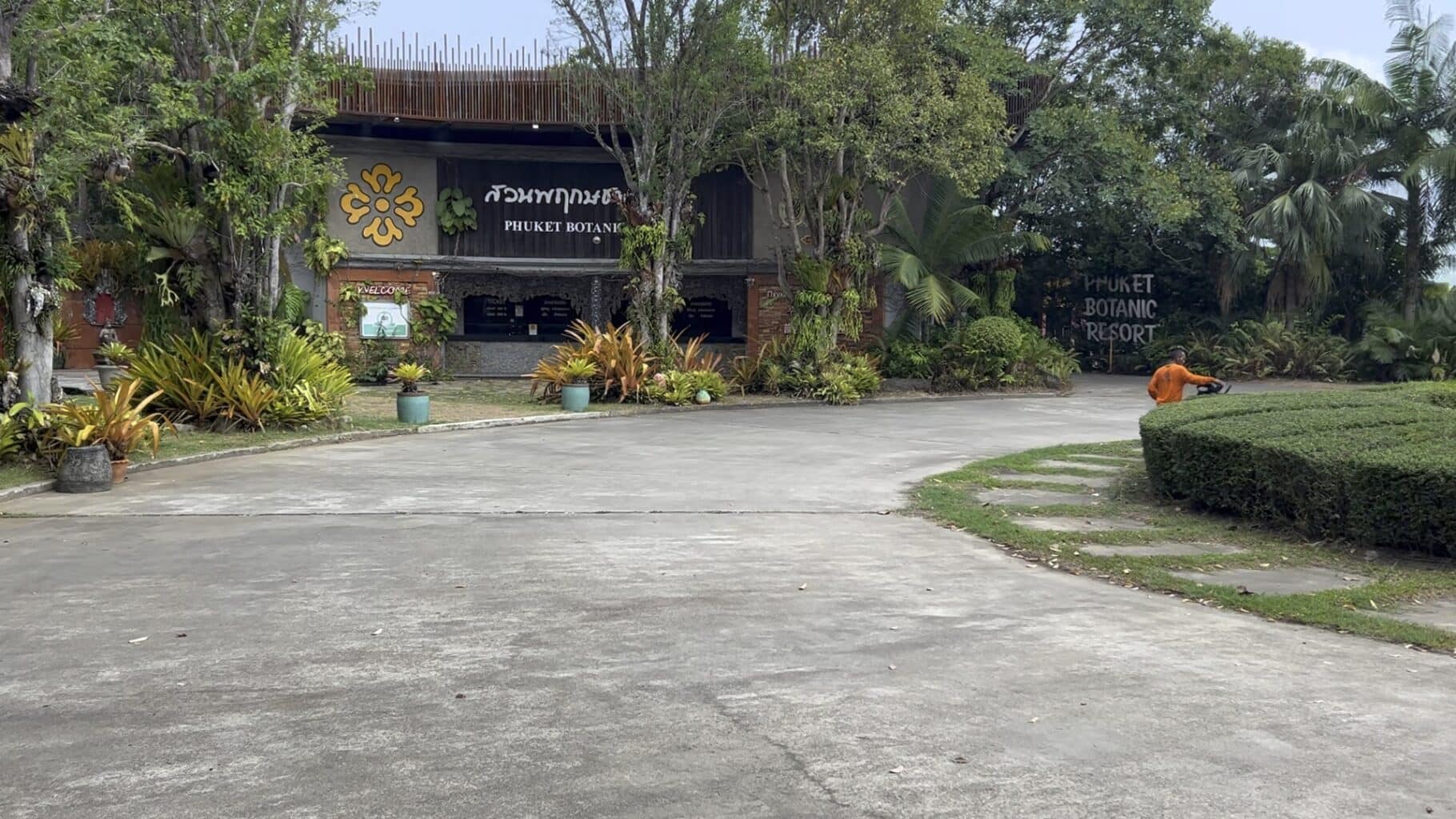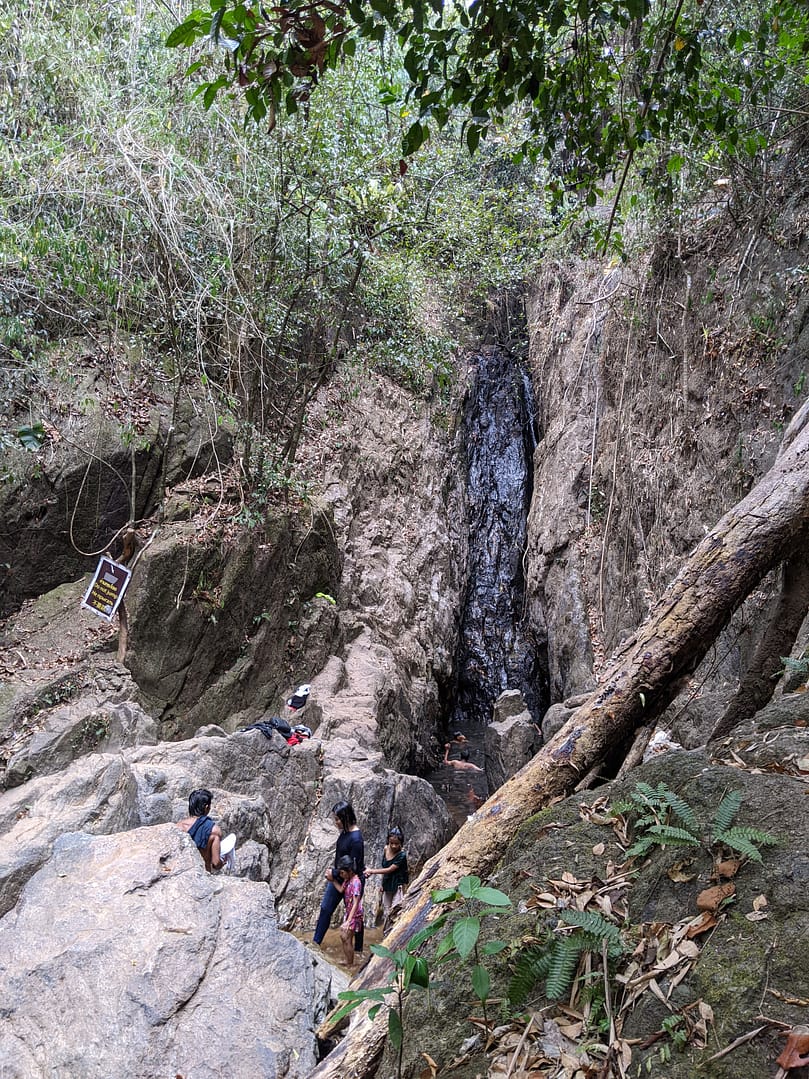Is Phuket still a budget traveler’s dream?
We recently found ourselves with both the time and the money to do some extensive traveling. We’d heard about the amazingly affordable opportunities to be found in Thailand, so we decided to see what it was all about. We set out with the goal of exploring the island of Phuket, Thailand, for 30 days on a budget of $3,000 for two people.
Part 1: Accommodations
Our Budget:
$250 for our first 5 nights in a hotel, and under $1,000 for a 1-month apartment rental.
The Background:
For this trip, we wanted to stay somewhere for a full month and really immerse ourselves in the Thai culture (and food!). We read countless blogs, watched YouTube videos, and listened to podcasts for advice on how to get the best deal on a long-term apartment. Our research indicated that there are plenty of rooms available in Phuket, so we didn’t expect to have too much trouble finding a place once here rather than booking in advance. This would allow us to scope out the various neighborhoods and decide what looked best for us. We were hoping to find somewhere a bit quieter, maybe even in a rural area, but still accessible to transportation. We hoped we’d be able to negotiate the price if the landlord didn’t have to pay booking fees to AirBnB or Agoda. Because we were staying long-term, we had several “must-haves” on our apartment amenities list. We wanted a kitchen, a washing machine, a separate living and sleeping space, a community pool, and a walkable location. We knew it would take a bit of time to find a good place, so we allowed ourselves 5 nights in a hotel while looking for an apartment.
The Reality:
When we arrived, we discovered that while there are many rental units available, the vast majority are typical hotel rooms, with no kitchen or laundry facilities. While some affordable rooms were very luxurious, they didn’t have what we wanted long term. There were actually a limited number of places that met all of our requirements, and these rented quickly at a premium. In addition, in Phuket, 30-day stays are not eligible for a long-term discount; that is reserved for 3-, 6-, or 12- month leases.
We ended up riding the entire route of the Smart Bus from the airport to Rawai Beach, a trip of over two hours. While long (especially after an epic airplane journey!), it was a great way to see each area for ourselves. Back in the US, we had thought that the Rawai area would be the best fit. But by judging the people waiting at each bus stop, we decided we preferred Karon Beach. (The Karon Beach people were middle aged and wearing an appropriate amount of clothes, in case you were wondering.) The Rawai neighborhood was quite nice, but the beach itself was definitely not what we were hoping for, as most of the space was taken up by longtail boats.
We took the Smart Bus back to Karon Beach and started walking into promising establishments. Most had no vacancies and we were outpriced at the rest. Discouraged, hot, and tired, we took a bus back to our home-base near the airport. The 90 minute journey wasn’t nearly as fun on the way back and we both agreed we needed to stay somewhere closer to our goal. After taking a beach day to relax and explore the Sirinath National Park, we checked out of our airport hotel and moved to the Chalong region. This area isn’t near any beaches, but lies right on the bus routes to Kata, Karon, Nai Yang, Rawai, and Phuket Town. And boy, was it busy! Cars and motorcycles rushed by constantly going the wrong way (to us), and there was minimal or no sidewalk for pedestrians.
We used our time at our Chalong hotel to look for an apartment both online and in person. We narrowed our search to Karon Beach, Nai Yang Beach, and Chalong. The place we ultimately settled on was a condominium complex across the street from our hotel that we walked into on a whim to inquire about vacancies. We assumed it would be full or out of our price range, but surprisingly they had a rather large 2-bedroom unit available for the same price as the much smaller studios we considering in Nai Yang and Karon. While we were sad to sacrifice walking distance to the beach, we were compensated by being next to the best grocery store on the island. We love Thai food, but sometimes it’s nice to cook for yourself!
After some time in Thailand, we discovered the reason for the limited accomodations. Phuket in particular has become a haven for Russian and Ukrainian ex-pats looking to avoid the economic strife caused by the current Russian-Ukranian war.
They are buying and renting a lot of the rental property available in the area, so what was once a buyer’s market has become an area with rental buildings at nearly full occupancy.
Budget Outcome:
$212.10 for 5 nights in a hotel
$1,285.93 for 30 days in an apartment
= $248.03 over budget
What We Learned:
- Price negotiation is not really an option in Phuket, at least not during peak season or for prime accommodations.
- Traveling around Phuket is time-consuming.
- Everywhere in Phuket is crowded – there are no rural areas.
Our Advice to Other Travelers:
If you don’t mind having a “moving day” every 5-10 days to change location, it is absolutely possible to travel around Thailand cheaply without reservations, even in peak season. Travel light and don’t expect anything more than a basic hotel room. As you book each hotel, consider the activities you want to do in the area and consider paying more to be very close to them. Even if you enjoy walking, the combination of heat and constant traffic will make every distance seem farther.
However, if you are like us and prefer to have a home base, book in advance. It’s unlikely you will get a significantly better deal by waiting until you are in Phuket, and you will definitely have more options available the farther out you book. Make a “must-have” list of amenities and check several sites – AirBnB, Agoda, Booking.com. Use Google Maps to see how far and what kind of terrain you will be walking along to get to the destinations you will go to most often. Some hotels seem close to the beach but are on top of a steep hill. Others are right along the main highway with no sidewalks, and walking (especially with kids) would be dangerous.
A quick summary of the main areas and our observations:
- The Airport & Nai Yang Beach – lots of jetlagged backpackers
- Patong Beach – the party zone (in case you hadn’t heard!)
- Karon Beach – great for middle-aged couples and families, gets a bit busy at night
- Kata Beach – similar to Karon, but more upscale and trendy with a crowded beach
- Nai Harn Beach – upscale but a bit quieter than other parts of the island
- Rawai Beach – slightly less crowded, the beach is not good for swimming but can be used as a departure point to go island hopping
- Chalong Circle / Pier – very busy hub with a mix of everything except a beach
- Phuket Town – more affordable, historic area but a long ride from any beaches
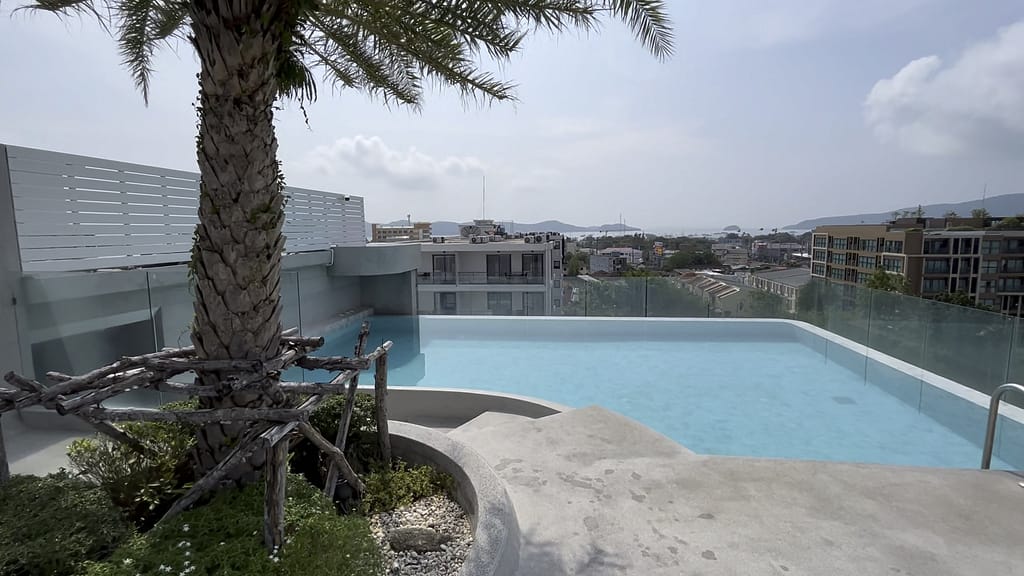
Part 2: Food
Our Budget:
$900 for 30 days
or
$15 per person per day
or
$10 for a meal for two
The Background:
Obviously, one of our top reasons to travel to Thailand was the food! Delicious pad thai, massaman curry, and chicken satay served authentically by the people that invented it. In the US, a Thai meal for 2 with all of our favorites would easily cost us $50. In Thailand, we expected to pay about $10 for the same meal.
The Reality:
Yes, it’s true, in Thailand you can get some amazing Thai food for an amazing price!
However, at least in Phuket, you can’t expect to eat cheaply and well wherever you go. In America, you can generally assume that a more upscale restaurant will be more expensive but also have better food than somewhere cheap and fast. That is not always the case in Thailand. We had some delicious meals at night markets eating quickly made street food, and some not-so-good meals at hotel restaurants catering to tourists.
There was definitely a learning curve to hitting our meal budget of $15 per person per day. On that budget, we planned to spend about $10 on each meal together. In our first three days, where we stayed at a resort near the airport and ate mostly at restaurants nearby, we had three main meals. The first was $21, but we were excited by the amazing food and promised to do better next time. But the next day was quite busy and by the time dinner rolled around we were too tired to care about cost, so we again ate near the resort and spent $22.75. OK, we thought, we really will try harder… and promptly spent $28 at lunch the next day! (To be fair, this meal did include 2 beers.) Fortunately we spent less on the other 2 meals of each day so we didn’t completely blow our budget.
Once we found a place to stay long-term, we started to adapt to the food culture in Thailand and were able to stay closer to budget. It helped that we had a kitchen in our apartment so we ate most breakfasts and either lunch or dinner at home. We stayed near Chalong Circle, home to a Villa Market, the best ex-pat grocery store on the island. And, we discovered, the most expensive. We soon learned to shop at the Big C for our staples and only went to Villa Market when we were longing for a taste of home.
Another interesting thing about Thailand is that eating out is not necessarily more expensive than cooking for yourself. If you eat at street markets or local restaurants (away from resorts), you can actually get cooked food for about the same cost as you’d pay for the raw ingredients. So cooking at home for us was mostly a convenience factor.
If you want to drink, you will find alcohol prices vary widely depending on where you are. There are also restricted hours for purchasing beer at grocery and convenience stores. You are only able to do this from 11am-2pm, and 5pm-midnight. A four-pack of beer at the grocery store will cost you about $6.50; at a restaurant, expect close to $20.
Something to keep in mind is that while Thai people make the best Thai food, the American and European food can be hit or miss. We had some of the worst pizza ever at the Sirinath National Park restaurant, and don’t even get me started on our experience with a quick burger delivery in the Nai Yang area.
Budget Outcome:
$1,102.08 for 30 days
or
$18.37 per person per day
=$202.08 over budget
What We Learned:
- Expect to pay a premium at a sit-down restaurant.
- Order Thai food (not Western) for the best tasting and cheapest meals.
Our Advice to Other Travelers:

You probably came to Thailand to enjoy the food, so be sure to live it up! Don’t be afraid to try eating in a variety of places. We were concerned about the spiciness and cleanliness, but with a bit of common sense neither was a problem. On a per-meal basis, the food was not overwhelmingly spicy (with the exception of the restaurant on Banana Beach). But yes, your stomach will probably start to rebel after a week of that diet – so be nice to it and try one of the many non-spicy Thai dishes, like omelettes, fried chicken, or mango rice. As far as stomach bugs due to cleanliness, just be aware of where you’re getting your food. Make sure it is cooked in front of you or warm it up yourself when you get home. And if it tastes off – don’t eat it!
Part 3: Travel
Our Budget:
$400 for one month of transportation
The Background:
Our favorite thing to do when traveling is to explore an area on foot, experiencing the sights, sounds, and smells of an area first hand at our own pace. When in Thailand, we didn’t plan to spend much on shopping or partying; our main expense would be traveling to new locations. We thought we’d be able to take a Grab taxi to the beach for a few bucks each way, or maybe catch a bus for even cheaper. We knew we’d want to do a few longtail boat excursions to check out the islands, and figured that would be $30-50 per trip.
The Reality:
Just like our accommodations and our food, our transportation costs quickly became more than what we expected. The first few days were not too bad. Our hotel had a free shuttle to and from the airport, and we were able to catch the Smart Bus from the airport to connect with all the beaches for only 100 baht ($3) each. But the Smart Bus route is limited, running mainly along the east shore, and the stops are quite far apart relative to a typical US city bus.
When we relocated to the Chalong area, we expected to be able to catch the local “blue bus”, a.k.a song thaew, to Kata and Karon beaches and to Phuket Town. Unfortunately, the bus stops are not well marked and the bus schedule is a bit erratic. On our first attempt to get to Karon Beach, we waited in the hot sun for 30 minutes before giving up and catching a passing taxi. By the time we were ready to return home around 6:30 PM, the buses had stopped running and we had to take a taxi home, too. All in all, our roundtrip to the beach cost over $21!
After a few days of this, we decided to rent a scooter. Well, in the US we’d call it a scooter or a moped but in Thailand even the smaller motor bikes are all called motorcycles. The woman who runs the motorcycle rental shop on our corner was extremely nice and patient. She let us try riding up and down the side streets on different bikes for almost an hour until we found one we were comfortable with. We paid 5,200 baht ($150) for an older model 160cc motorcycle for one month. I admit I was terrified at some point during every single moped trip we took. But it cut down on our transportation cost significantly. A tank of gas was less than $5 and was enough for 4 or 5 excursions around Phuket. Plus, we were no longer dependent upon the public transportation schedule.
Budget Outcome:
$106.22 in buses and taxis
$150.78 plus $16.26 gas for motorcycle
$0 for boat excursions*
Total of $273.26
=$126.74 under budget
*We were so busy exploring Phuket we didn’t make it to an island! We plan to do this next month and found a captain willing to take us to Coral Island for $90, so we’d still be under budget if we’d done this.
What We Learned:
There are five traffic rules that might be different than you are used to:
- The bigger vehicle has the right of way.
- Drive on the left side of the road.
- Rotaries / traffic circles go counter clockwise.
- At stoplights, motorcycles can weave their way to the front to a specially marked section.
- On major thoroughfares, there are tunnels that are accessed from the inside (right) lanes to bypass the city. Avoid these on a motorcycle.
Our Advice to Other Travelers:
Getting around Phuket is definitely possible, but there is a trade-off of time vs. money vs. safety. The traffic is intense and you need confidence to avoid getting in trouble. If you do rent a motorcycle, memorize your route ahead of time so you can keep 100% of your attention on the road. Renting a car is also affordable especially if you are traveling with more than two people, but you will still need to deal with the crazy traffic and driving in an unfamiliar area. For shorter stays (less than a week), we’d recommend using buses and taxis despite the extra cost.

Part 4: Entertainment
Our Budget:
$450 for one month of entertainment, souvenirs, etc.
The Background:
Besides the Thai food, we were most excited to explore the beaches of Phuket! There are over 44 beaches on the island of Phuket, and even more in the smaller islands reachable from Phuket by boat. The best part is, there is no admission fee. We also planned to explore some nature parks, experience a Thai massage, and buy a few souvenirs for our family back home.
The Reality:
We correctly judged our personal habits and spent a lot of time at the beach. I think we visited a beach at least every other day. These were, as expected, all free (minus the cost to get there). We especially loved snorkeling at Ao Sane. We did also visit a few nature parks: Naiharn Lake Park, King Rama IX Park and Monkey Hill in Phuket Town, our local reservoir park near Wat Sin Supharam, the Phuket Botanical Garden, Sirinath National Park, and Khao Phra Theao National Park. The local parks were free, but entry into the botanical garden and national parks was between $6-14 per person.
We also tried a Thai massage – and then had to go back for a few more! I had never had a massage before and honestly had a bit of trepidation as I’m not comfortable with other people touching me. But I loved my first time and did not feel awkward at all. I particularly like the Karon Beach massages, which are run by a group of women (I saw no men) that are trained and accredited locally. They charge a set rate and have huts set up a ways back from the waterfront. It felt private but you still got to experience a pleasant breeze and ocean smells. The massages were about $12 for an hour, a huge deal compared to US prices. There are more upscale, indoor locations that charge a bit more and have more options. Read the local reviews on these to make sure you get the type of experience you want.
As for souvenirs, we did pick up a few things but our shopping spree was limited by luggage space. Of course, I had to make room for some elephant pants for only $6. We also found some small art pieces at the night markets to bring home as gifts. We both mailed back cards to our families as well, and found postage cheaper than other countries we’ve been to: $1 for an international postcard, $3 for a letter.
Budget Outcome:
$156.83 for massages
$59.58 for park entrance fees
$109.09 for souvenirs, etc.
Total of $325.50
=$74.50 under budget
What We Learned:
With all the beautiful, free beaches, it would be easy to spend a month just visiting them. But that would be too bad, as there is so much more to Phuket. There are attractions to appeal to everyone – from nature reserves to museums to water parks. Entry fees can add up as foreigners are charged at a much higher rate than Thai citizens. Expect to pay around $10 per person for a self-guided nature park and $50 or more per person for specialty places (like a water park or an elephant reserve).
Our Advice to Other Travelers:
Definitely try a Thai massage. If you’ve never had a massage before, this is the place to do it because the people here are some of the best. And at only $14 for an hour, massages are a great deal compared to US prices. But watch out! If you develop a daily massage habit, you might blow your budget.

In conclusion:
Is it Worth Traveling to Phuket in 2023?
Yes!! We truly loved our time in Phuket and thought it was well worth the expense. In fact, we decided to stay a second month! There are so many things we still want to check out: a trip to Phi Phi Islands, an elephant sanctuary, more beaches, and more Thai food.
That being said, the Thai tourism industry is promoting Phuket as an upscale vacation destination and along with that comes higher prices. We ended up paying more than we budgeted for both food and lodging. Food prices are higher due to overall worldwide inflation as well as our location on a tourist island. Lodging is currently at a premium here in Phuket due to a boom in tourism, especially from Russian and Ukranians. Travel and entertainment costs have remained relatively steady so far, but I wouldn’t be surprised if they started to increase, too.
In total, we spent $3,198.97 during our first 30 days in Phuket, Thailand. This was less than $200 over budget – not too bad!



